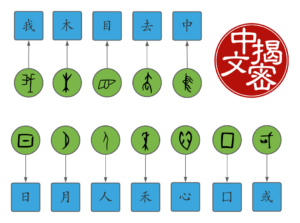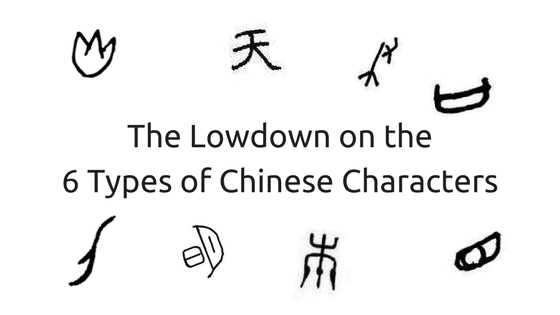How to Learn Chinese Characters: Six Effective Techniques
Learning Chinese characters can seem daunting, but with the right techniques, it becomes an achievable and rewarding journey. Whether you're a beginner or looking to refine your skills, mastering these intricate symbols requires strategy and consistency. This article explores six effective methods to help you learn Chinese characters efficiently. From understanding radicals and stroke order to leveraging mnemonics and spaced repetition, each technique is designed to enhance retention and comprehension. By combining these approaches, you’ll build a solid foundation and gradually expand your vocabulary. Dive in to discover practical tips that will transform your character-learning experience and boost your confidence in reading and writing Chinese.
How to Learn Chinese Characters: Six Effective Techniques
Learning Chinese characters can seem daunting, but with the right strategies, it becomes manageable and even enjoyable. Below, we explore six effective techniques to help you master Chinese characters efficiently.
1. Break Down Characters into Components
Chinese characters are often made up of smaller radicals and components. By learning these building blocks, you can decode and remember characters more easily. For example, the character 好 (hǎo - good) consists of 女 (nǚ - woman) and 子 (zǐ - child).
See AlsoCantonese Coconut Chicken Soup| Character | Components | Meaning |
|---|---|---|
| 好 (hǎo) | 女 + 子 | Good |
| 明 (míng) | 日 + 月 | Bright |
2. Use Mnemonics to Enhance Memory
Creating stories or associations helps in retaining complex characters. For instance, the character 休 (xiū - rest) can be visualized as a person (亻) leaning against a tree (木).
| Character | Mnemonic |
|---|---|
| 休 (xiū) | Person resting against a tree |
| 森 (sēn) | Three trees = forest |
3. Practice Writing Characters Regularly
Repetition is key to mastering stroke order and muscle memory. Use grid paper to ensure proper proportions and balance.
| Practice Tip | Benefit |
|---|---|
| Write daily | Improves retention |
| Trace first | Builds stroke familiarity |
4. Learn Characters in Context
Studying characters within words or sentences reinforces understanding. For example, learning 学校 (xuéxiào - school) is more effective than memorizing 学 (xué) and 校 (xiào) separately.
See AlsoThe tones in Mandarin are more important than you think| Character | Contextual Usage |
|---|---|
| 学 (xué) | 学习 (xuéxí - to study) |
| 电 (diàn) | 电视 (diànshì - television) |
5. Leverage Spaced Repetition Systems (SRS)
SRS tools like Anki or Pleco help review characters at optimal intervals, ensuring long-term retention.
| Tool | Advantage |
|---|---|
| Anki | Customizable flashcards |
| Pleco | Integrated dictionary & SRS |
6. Engage with Native Materials
Reading books, news, or watching shows in Chinese exposes you to characters in real-life usage.
| Material | Benefit |
|---|---|
| Children's books | Simple characters & repetition |
| Subtitled dramas | Visual & auditory reinforcement |
How to learn Chinese characters effectively?

Understand the Structure of Chinese Characters
Chinese characters are composed of radicals and strokes, which form their building blocks. Understanding these components helps in memorizing and recognizing characters more efficiently.
- Radicals often indicate meaning or sound, so learning common ones (like 水 for water) speeds up comprehension.
- Strokes follow a specific order; practicing stroke order improves writing accuracy and recall.
- Break characters into smaller parts (e.g., 好 = 女 + 子) to simplify memorization.
Use Spaced Repetition Systems (SRS)
Spaced repetition is a scientifically proven method to enhance long-term retention of Chinese characters.
- Use apps like Anki or Pleco to review characters at optimal intervals.
- Focus on high-frequency characters first to build a practical vocabulary.
- Combine SRS with writing practice to reinforce muscle memory.
Practice Writing Characters Regularly
Writing by hand reinforces memory and helps internalize character structures.
See AlsoFive Most Bizarre Chinese Dish Names- Start with grid paper to maintain proper proportions and stroke placement.
- Write each character 10–20 times while saying its pronunciation and meaning aloud.
- Gradually increase complexity by combining characters into words or sentences.
Learn Characters in Context
Studying characters in isolation is less effective than encountering them in real-world usage.
- Read simple texts or graded readers to see characters in sentences.
- Watch Chinese media with subtitles to associate characters with spoken language.
- Use flashcards with example sentences to understand usage patterns.
Leverage Mnemonics and Stories
Creating vivid mental associations makes characters easier to remember.
- Invent stories linking a character’s shape to its meaning (e.g., 木 looks like a tree).
- Use apps like Skritter or Remembering the Hanzi for premade mnemonics.
- Associate characters with images or personal experiences to strengthen recall.
What are the six methods of forming Chinese characters?

1. Pictographs (象形字 - Xiàngxíngzì)
Pictographs are characters derived from drawings of physical objects. These were among the earliest forms of Chinese writing, where the shape of the character directly resembled the object it represented. Over time, these symbols became more stylized and abstract.
- Example: 山 (shān - mountain) resembles peaks.
- Example: 水 (shuǐ - water) mimics flowing water.
- Example: 日 (rì - sun) originally depicted a circular sun.
2. Simple Indicatives (指事字 - Zhǐshìzì)
Simple Indicatives represent abstract concepts through symbols or marks added to existing pictographs. These characters indicate ideas rather than physical objects.
- Example: 上 (shàng - up) uses a line above a base.
- Example: 下 (xià - down) places a line below a base.
- Example: 本 (běn - root) adds a mark to the base of a tree (木).
3. Compound Indicatives (会意字 - Huìyìzì)
Compound Indicatives combine two or more existing characters to convey a new meaning. The components work together to suggest the character's interpretation.
- Example: 休 (xiū - rest) combines 人 (person) and 木 (tree).
- Example: 明 (míng - bright) merges 日 (sun) and 月 (moon).
- Example: 好 (hǎo - good) pairs 女 (woman) and 子 (child).
4. Phonetic-Semantic Compounds (形声字 - Xíngshēngzì)
Phonetic-Semantic Compounds are the most common method, combining a semantic component (indicating meaning) and a phonetic component (suggesting pronunciation).
- Example: 河 (hé - river) uses 氵(water) and 可 (kě) for sound.
- Example: 妈 (mā - mom) pairs 女 (female) with 马 (mǎ) for sound.
- Example: 清 (qīng - clear) combines 氵(water) and 青 (qīng).
5. Transfer Characters (转注字 - Zhuǎnzhùzì)
Transfer Characters involve characters that originally had similar meanings or pronunciations but evolved into distinct forms over time.
- Example: 老 (lǎo - old) and 考 (kǎo - test) share an ancient root.
- Example: 乐 (yuè - music) and 樂 (lè - joy) diverged in usage.
- Example: 长 (cháng - long) and 長 (zhǎng - grow) are historical variants.
6. Loan Characters (假借字 - Jiǎjièzì)
Loan Characters are existing characters borrowed to represent unrelated words with similar sounds, often due to a lack of an original character.
- Example: 来 (lái - come) originally meant wheat.
- Example: 我 (wǒ - I) was once a pictograph of a weapon.
- Example: 万 (wàn - ten thousand) initially depicted a scorpion.
What is the most effective way to learn Chinese?

Immerse Yourself in the Language
The most effective way to learn Chinese is through immersion. Surrounding yourself with the language accelerates comprehension and retention. Here’s how:
- Watch Chinese media: Movies, TV shows, and news help you pick up natural speech patterns.
- Listen to podcasts or music: Improves auditory recognition of tones and vocabulary.
- Speak daily: Practice with native speakers or language partners to build confidence.
Master Pinyin and Tones Early
Pinyin (Romanization of Chinese characters) and tones are foundational. Mispronouncing tones can change meanings entirely.
- Learn Pinyin first: It’s the bridge to pronunciation before tackling characters.
- Practice tones rigorously: Use apps or recordings to mimic native speakers.
- Focus on minimal pairs: Words with similar sounds but different tones (e.g., mā vs. mà).
Prioritize High-Frequency Vocabulary
Learning common words first ensures practical communication faster.
- Use frequency lists: Start with the 500 most used words.
- Contextual learning: Study words in sentences, not isolation.
- Review with flashcards: Spaced repetition systems like Anki boost retention.
Study Characters Strategically
Chinese characters are complex but manageable with a systematic approach.
- Learn radicals first: They’re building blocks of characters.
- Write regularly: Muscle memory aids recall.
- Use mnemonics: Create stories to remember character components.
Leverage Technology and Apps
Digital tools make learning flexible and interactive.
- Use language apps: Duolingo, HelloChinese, or Pleco for structured lessons.
- Join online communities: Platforms like Reddit or Discord offer support.
- Try speech recognition: Apps like Google Translate refine pronunciation.
Frequently Asked Questions (FAQ)
What are the most effective techniques for learning Chinese characters?
Learning Chinese characters can seem daunting, but using effective techniques makes the process manageable. The six best methods include spaced repetition (using apps like Anki), breaking characters into radicals (identifying smaller components), practicing writing by hand, associating characters with stories or mnemonics, learning characters in context (through sentences or phrases), and consistent daily practice. Combining these strategies helps reinforce memory and improves recognition over time.
How can mnemonics help in memorizing Chinese characters?
Mnemonics are powerful tools for remembering Chinese characters by linking them to vivid stories or images. For example, the character 休 (xiū, meaning rest) can be visualized as a person (亻) leaning against a tree (木). This mental association makes recalling the character easier. Creating personalized mnemonics enhances engagement and retention, especially for complex characters with multiple strokes.
Why is writing Chinese characters by hand important?
Writing characters by hand reinforces muscle memory and deepens understanding of stroke order and structure. Unlike typing, which relies on pinyin input, handwriting requires active recall of each stroke. This process strengthens neural connections, making characters easier to recognize later. Additionally, practicing regularly with grid paper helps maintain proper proportions and balance, which are crucial for legibility.
How does learning radicals simplify mastering Chinese characters?
Radicals are the building blocks of Chinese characters, often indicating meaning or pronunciation. For instance, the water radical (氵) appears in characters like 河 (hé, river) or 湖 (hú, lake). By learning common radicals, you can decode unfamiliar characters more efficiently. This method reduces the need for rote memorization and helps categorize characters logically, speeding up vocabulary acquisition.
Leave a Reply

Related Posts